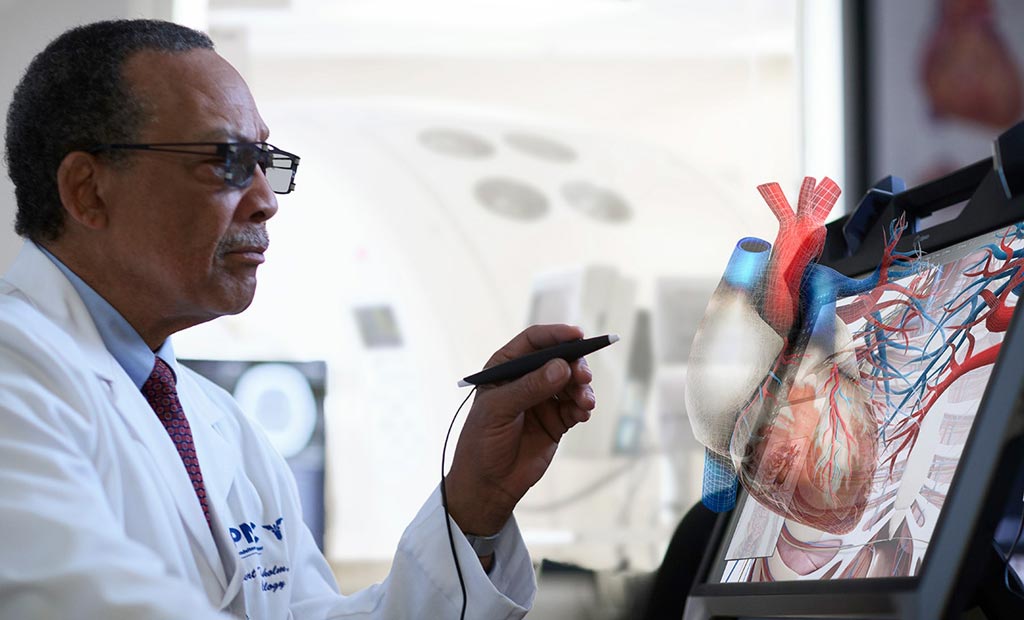Intraoperative Holographics Support Cardiac Procedures
By MedImaging International staff writers
Posted on 08 Oct 2019
A novel intraoperative software suite provides naked-eye, touchless, and interactive three-dimensional (3D) anatomical imaging to enhance structural heart procedures.Posted on 08 Oct 2019
The EchoPixel (Santa Clara, CA, USA) True3D anatomical imaging tools are designed to provide clinicians with a holographic experience by using special virtual reality (VR) glasses that help them visualize and interact with patient-specific organs and tissue, just as they would with physical objects in the real world. This allows for enhanced pre-operative planning, improved patient selection, increased patient engagement, and the completion of increasingly complex structural heart and congenital heart disease procedures in both adults and pediatric patients in shorter timeframes.

Image: VR glasses and an electronic scribe help manipulate a holographic heart (Photo courtesy of EchoPixel).
The interactive VR software leverages computerized tomography (CT), magnetic resonance imaging (MRI), C-Arm fluoroscopy images, and echocardiography to create life-size holographic versions of organs, blood vessels, and other structures. This allows physicians to interact with a digital twin of the patient specific anatomy to identify optimal treatment target, approach, and catheter position, capture accurate measurements, distances, and angles, and virtually try in and fit implants and cardiac devices. The enhanced visualization of anatomical structures and spatial relationships also facilitate completion of procedures with reproducible, reliable outcomes.
“Building on the success of our existing technology in pediatric congenital heart procedures, EchoPixel is committed to enabling digital surgery, providing and continuously improving transformative technology designed to help clinicians improve and personalize delivery of minimally invasive therapies,” said Sergio Aguirre, CEO of EchoPixel. “Going forward, our vision for the OR of the future involves expanding our mixed reality True3D software platform to integrate AI and robotics to enable the completion of more precise and personalized procedures.”
“EchoPixel's technology lets you effortlessly interact with 3D images to better understand complex cardiac anatomy and the anatomic variability that is commonly seen in structural heart disease patients,” said Saurabh Sanon, MD, of Florida Atlantic University (Boca Raton, USA). “We are currently working on a research study comparing procedure times with and without the technology, and the initial results are promising in terms of reducing procedure times and device waste.”
In order to successfully identify an area of interest from a 3D medical data set, as those produced by CT, MRI and other devices, doctors are required to mentally integrate a series of 2D images and cognitively extract the relevant relationships that define the tissue or organ of interest, as well as its neighboring anatomy. In complex cases, they must visually map multiple views of the same data to find appropriate correspondences of one view with another view to produce a match, and determine if what they see is the tissue they want to evaluate.
Related Links:
EchoPixel
Florida Atlantic University













